Tag: pruning
Preparing Eugene Trees for Climate Change
What we can do in the face of an uncertain future
When it comes to trees, there are so many layers to preparedness, from the near to distant future, from the next heat wave or ice storm to what the climate might look like in 25 years. So much of the future is uncertain, but there’s plenty you can do to prepare your trees for what they might encounter.
“So much is unknowable,” says Eugene Director Erik Burke. “You won’t have the information you need to make your decisions when you make them. You just have to make your best guess.”
The very first decision you’ll make is what tree to plant. Considering trees that are adapted to your climate, and what the climate might be in the future, can set your tree up for a long, healthy life.
“For a while, the estimate was that by 2050, Eugene’s climate might be like Sacramento’s is now,” Erik says. “But that estimate is moving even further south to Stockton.”
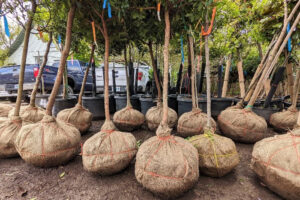
Erik outlines three approaches that planting programs can take to prepare for climate change. The first is diversity for diversity’s sake. Planting a variety of trees means that if any particular species fails due to climate impacts or disease, it won’t take out a huge chunk of the urban forest. The second is very intentionally looking at trees adapted to our native climate and soils, but many of those species aren’t readily available in the nursery trade. The third is planting broadly adapted trees with huge ranges, but many of those trees aren’t drought tolerant, and because many of those trees are clones, they aren’t given the opportunity to adapt from generation to generation.
“Really, we should do some of each approach,” Erik says. “There are trade offs for each.”
What about trees that are already in the ground? How do we prepare our large trees? Our Eugene Team always emphasizes the importance and value of regular pruning. Appropriate pruning will set a tree up to survive in the urban environment and in the face of weather events.
“It’s important to remember that stress is additive. Even if a tree survives, stress can pile up from heat wave to ice storm to heat wave.” Erik says. “That’s why we need to water during heat waves and prune properly after ice storms.”
How we respond to storms is the first step in preparing for the next one. Erik warns that bad pruning after an ice or wind storm can lead to more failure down the line, because limbs won’t be strong enough for the next. Still, he advocates for proper pruning after storm damage rather than removing a tree.
“When you remove a tree, you’re back to square one. But restorative pruning can give that mature tree a chance to continue providing benefits.”
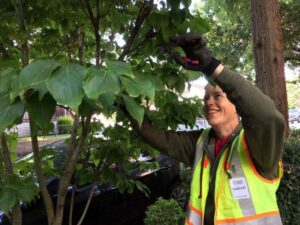
Selection, siting, pruning, protecting soil, and public education. This is how we reach what Erik calls our ultimate goal: to have a healthy relationship with trees. That’s why it’s important to find opportunities to talk about trees.
“Weather and climate is something everyone experiences,” says Taylor Glass, Eugene-Springfield Program Manager. “It’s something to connect over. It’s a way to talk about climate change.”
“My hope is that it will cause us to cooperate more,” Erik says.
“We’re going to have to,” Taylor says.
Show Your Trees Some Tree-LC
Caring for trees of all ages creates the diverse urban forest we need!
Sometimes trees need a little tree love + care. When we take care of our trees, we help them take care of us. This is the beautiful relationship between trees and community that is at the core of Friends of Trees. You can help foster and expand your community of tree stewards.
Because we are a tree-planting organization, we usually focus on young tree care. As our Community Tree Care Coordinator Andrew Land puts it, “we’re really in the business of pediatric arboriculture stewardship training.” That mouthful of words aside, we focus on young trees getting the care they need so that they can survive to be mature trees.
“We often talk about how important it is to have a diversity of tree species,” Andrew says. “It’s also really important that we have a diversity of tree ages. Trees planted at the same time will theoretically time out at the same time.”
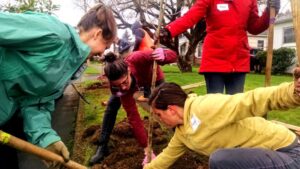
While it’s important that we plant and develop our urban forest, it’s also important that we nurture and maintain. It’s not one or the other. It has to be both.
“When we talk about the public health benefits of trees, we’re really talking about mature trees,” Andrew says. “The benefits of a tree—like its ability to clean air and water—expands exponentially each year.”
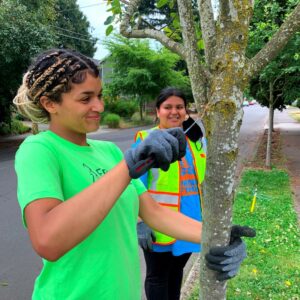
This is why we don’t just plant trees and walk away. So what are some of the things you can do to take care of your trees? We encourage you to make a tree care plan for all your trees, no matter how old. The right attention over the years can maximize the life of your tree and the benefit it provides.
For the first few establishment years, proper watering and mulching are crucially important. After that, trees are relatively low maintenance, but you should still make sure to do regular inspection and maintenance pruning every few years. Maintaining a healthy mature tree provides so many benefits to you and your whole neighborhood.
“One of the best things you can do is simply notice,” Andrew says. “Notice how the trees at your own home are doing. Notice how your neighbors trees are doing. Talk to your neighbors about their trees.”
For example, if you see a particularly special mature tree, talk to the owner about nominating it for special status and protections, like the Portland Heritage Tree Program.
Together, we can’t plant so many trees in just a single Saturday morning. Tree care can be a lifelong mission. Check out some resources here.
The 2023 Season Begins in Eugene
How the Eugene-Springfield team is starting the 2023 season
In Eugene and Springfield, Friends of Trees has been growing a robust community of tree stewards through their community pruning events. They’re about halfway through their slate of seven pruning events, each one with a small but mighty crew of pruners. By keeping these events intimate, each pruner gets plenty of hands-on experience.
“Young tree pruning is the most cost effective thing you can do for an urban forest,” says Eugene Director Erik Burke. “It’s a great experience for volunteers. We have a lot of regulars, and some new folks too.”
The Eugene Springfield team will kick off their season as they always do with another planting along Northwest Expressway on November 4th. This year will be the monumental Phase 10 of this planting project. It’s a prime example of putting trees in places where there’s plenty of room for trees and the benefits they provide. The team is able to plant large species, and also plant shrubs and bulbs to create a multi-level habitat for pollinators and wildlife. As each phase matures it does more and more to clean the air from the expressway and the railroad.
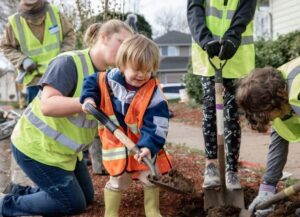
One of the most exciting things happening in Eugene this season will be the expansion of our equity work into high priority neighborhoods. With funding from an EWEB Greenpower Grant, the Bethel, Trainsong, and Far West neighborhoods will each get planting events, increased engagement, and more trees!
“We want to continue focusing our urban tree planting work on equity, sustainability, and resilience,” Erik says. “The Greenpower grant has allowed us to do even more.”
These are just a few of the exciting things happening for our Eugene Team this season. Stay tuned for when we dig in on these topics and more, and visit their event calendar here to join in on the fun!
Leaflet: Spring Tree Care
Spring has Sprung – What that means for your trees
Spring has truly come in fits and starts this year. Some of us might still feel like it’s winter, and some are ready to announce that Spring has sprung! Trees are the same way when it comes to breaking dormancy. Some are early risers, and some sleep in. A bunch of factors go into it, including species, daylight, and temperature.
Spring is the perfect time to notice seasonal cycles. The study of these periodic events in biological life cycles is called phenology. When does a tree go dormant, when do you start to see buds, how long is the growing season? We can see quite a range among species.
“Cornelian cherries normally bloom about this time of year,” says Neighborhood Trees Senior Specialist Andrew Land. “Whereas a few years back, someone approached me about an Oregon white oak that they thought was dead, until it finally broke bud in June.”
Andrew and other staff at Friends of Trees keep an eye on phenology as it particularly relates to survival. They take note of trends in trees’ responses to different stimuli like light and temperature, with the intent to prioritize the most climate adapted species.
Here are some things you can do to take care of your trees this time of year.
Mulch Madness
It’s a great time to refresh mulch as needed. The objective is to mulch the tips of the roots as they grow outward from the base of the trunk. They will grow into soil that’s moderate in temperature and contains moisture, factors that mulch will provide. Because the roots are growing outward, when you mulch trees in their second year in the ground, aim for more of a 4-5′ diameter ring of mulch, still 3” thick, about a foot from the base of the trunk.
You may have noticed that some trees hold their leaves through winter. They’re called marcescent leaves, and they are a sign of last season’s growth. You’ll see them on native oaks like Oregon white oak (Quercus garryana) and scarlet oaks (Quercus coccinea). Come spring time’s flush, these leaves will be shed to make room for new growth. You can use these leaves as mulch!
 Go easy on the pruning
Go easy on the pruning
It’s best to go easy with regard to pruning during “bud break.” This is when sap is rising up the tree, after having dropped to the roots in the fall. As the sap is rising, some trees (maples, for example) will “bleed” if pruned as sap is rising. It’s not harmful to the tree—that’s where maple syrup comes from, after all—but it can be disconcerting to see.
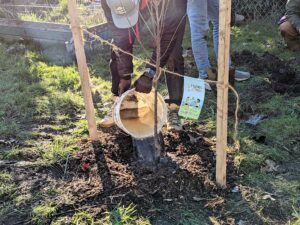
Weekly Watering
It’s almost time to start weekly watering for newly planted trees. “Deep and infrequent” is the recipe for success. Starting mid-April, 15 gallons all at once, once a week is ideal. Either a gator bag, hose on a gentle trickle for maybe 20 minutes, or a 5-gallon bucket with three 1/8″ holes drilled on the side at the bottom and filled 2-3 times consecutively works great.
If the temperature gets over 90 degrees, bump that up to twice a week. If we see another heat “event” coming, a good, deep soak beforehand is very wise as preventative medicine.
Get To Know Vancouver
Our 22-Year Partnership Continues to Grow!
Our thriving partnership with the City of Vancouver shows how committed the city is to trees and community. Since we started planting in Vancouver in 2001, we have worked with their Urban Forestry team to grow tree counts and volunteer engagement.
“It’s great to work with a city that’s investing in trees to be proactive about climate change,” says Neighborhood Trees Senior Specialist Ian Bonham.
“It’s a really great partnership, working with a nonprofit to get trees in the ground and engage homeowners in stewardship,” says Jessica George, the City of Vancouver’s Urban Forestry Outreach Coordinator. “Friends of Trees really helps grow the understanding of how trees are important.”
With our new contract, the partnership has grown from 400 trees planted each season to up to 700 trees, and from 200 trees pruned to 300.
“Pruning is an important part of it,” Jessica says. “We need to make sure that the trees are cared for so that they can provide their benefits.”
“More investment means more results,” Ian says.
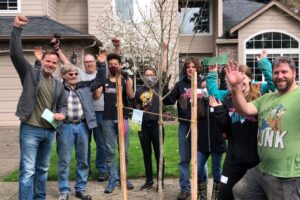
Friends of Trees has five planting events in Vancouver this season. That extra capacity has allowed us to give more attention to the Fourth Plain Corridor, a diverse, historically underserved community in need of canopy cover.
“The Fourth Plain Corridor has become a priority area for trees and engagement,” Jessica says. “Awareness of the importance of trees has really grown. We appreciate the Friends of Trees model of working with volunteers to grow the knowledge base.”
We still have room for volunteers if you want to sign up!
“We have awesome support from neighborhood coordinators,” Ian says, “and so many longtime volunteers do a lot to make it happen. It’s very collaborative, and we love to welcome new volunteers into the fold, too!”
“We’re really looking forward to it,” Jessica says. Mayor Anne McEnerny-Ogle and City Councilmember Sarah Fox will be in attendance.
We’ve also partnered with Vancouver on workforce development. They have hosted an AmeriCorps member since 2007 to work on community tree planting. In fact, both of our dedicated Vancouver staff came to us from the AmeriCorps position. The position was created to give capacity to both Friends of Trees and Vancouver as a sort of Super Neighborhood Coordinator. The position has morphed as the partnership has grown, but still supports Friends of Trees work in Vancouver. Vancouver Urban Forestry also hosts interns from our Adult Urban Forestry and Restoration Workplace Training Program.
The City of Vancouver is in the process of updating its Urban Forestry Management Plan, and is looking for public input. If you want to see more trees in your community, fill out their community survey.

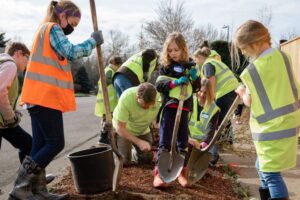

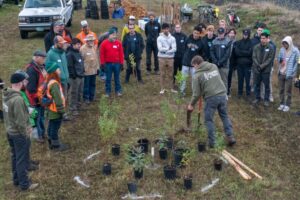
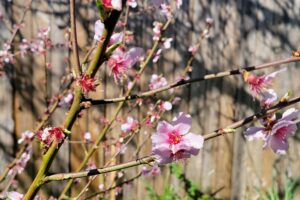
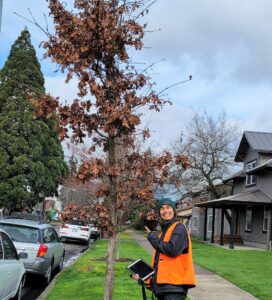 Go easy on the pruning
Go easy on the pruning